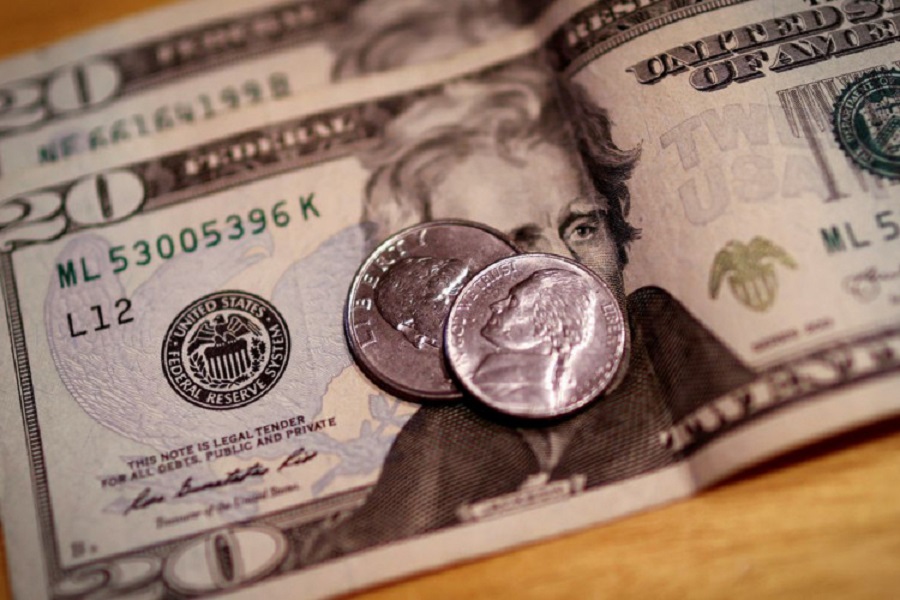RIO DE JANEIRO, BRAZIL – The dollar marked its fifth drop in 6 trading sessions on Friday, hitting a 2-week low below R$5.20 in the wake of a global weakening of the greenback after the U.S. Federal Reserve signaled a delay in the stimulus cut and minimized chances of an interest rate hike.
The price reaction comes before a busy week ahead, with a heavy indicator agenda, such as Brazil’s second-quarter GDP and the U.S. employment report for August.

In comments in preparation for a speech at the Jackson Hole bankers’ conference, Fed chief Jerome Powell indicated that the U.S. central bank will be cautious about any decision to raise interest rates as it tries to get the economy back to full employment.
Powell wants to avoid controlling “transitory” inflation and, in doing so, running the risk of discouraging job growth. But he agreed with many of his colleagues that cutting stimulus could be advisable later this year.
On the whole, Powell’s remarks were taken as a message that, ultimately, the abundant liquidity – in other words, excess dollars – which has been irrigating global markets since last year will continue at least until the end of 2021, with its potential withdrawal being gradual.
With the prospect of not drying up the money supply, the dollar plunged both in Brazil and abroad.
The dollar index against a basket of wealthy countries’ currencies was down 0.4% in the late afternoon to 10-day lows. The U.S. currency fell against 30 others from a list of 33, including emerging markets and the G10. The dollar even lost up to 1.3% against peers closer to the Brazilian real, such as the South African rand.
In Brazil, the U.S. currency traded in the spot market closed 1.15% lower at R$5.1965, the lowest since August 10 (R$5.1957).
“The modest downward shift in the dollar against most of its major peers and emerging currencies combined with the rally in (sector assets) energy and metals suggests that the market views the Fed as totally (recklessly?) indifferent to recent advances in inflation,” said Will Slaughter, emerging markets fixed income manager at Northwest Passage Capital Advisors in Milwaukee, USA.
COURT-ORDERED DEBT
In Brazil, Friday’s dollar tumble ended a week of virtually uninterrupted lows for the currency, which thus cancelled out the gains of the previous 3 weeks, driven by rising domestic tensions and also by uncertainties about the Fed and Covid-19.
This week the dollar retreated 3.50%, the lowest since the week ending May 7 (-3.75%). In the previous three high weeks, it gained 3.39%.
The strong adjustment in the exchange rate suggests that the market is starting to “burn” part of the risk premium accumulated since the end of June, when the dollar fell below R$4.90.
A factor that has helped ease the increased fiscal tension is the prospect of an agreement with a solution found in the Federal Supreme Court (STF) for the court-ordered debt issue, which amounts to almost R$90 (US$17.3) billion by 2022 and has been bothering the market and the economic team, not to mention creditors.
On Thursday, STF Chief Justice Luiz Fux said that the plan is for the payment limit of these obligations in one year to be governed by the same dynamics as the spending cap rule.
By doing so, this sum would grow only according to the inflation measured by the IPCA in the 12 months up to June of the previous year and, thus, it would not only make room in the Budget, but the gap would also be bigger than the one proposed by the Proposed Constitutional Amendment (PEC), which has been facing considerable resistance from several sides.
“I don’t think the market has processed this right,” said the manager of a large asset. “(The idea) opens more space in the (spending) cap, it doesn’t need to be processed as a PEC… everybody likes it,” he said, adding that the market “will improve” with that.
Friday’s drop has made the dollar change its path in August, and in the month’s accumulated the currency is down 0.22%. The steady drops of recent days has led the dollar to reduce its year-to-date gains to just 0.10%.
According to Fibonacci Retracement, a popular technical indicator, the dollar futures on Friday returned 50% of the high between late June and mid-August. If the downward trend is maintained, the currency could reach 61.8% of this trajectory, which would take it to around R$5.12 – a level that, if broken, would open the way to levels close to R$5.04, the minimum at the end of July.

